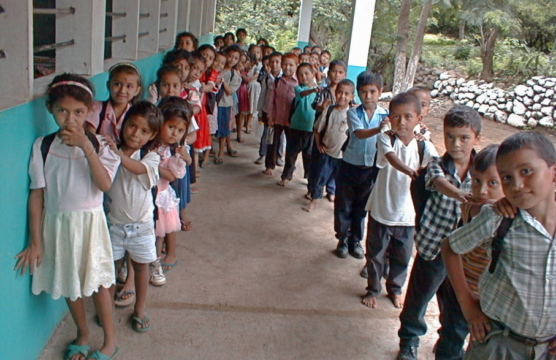
Measuring Up?
In 2009, some countries in Latin America and the Caribbean improved their PISA performance, but all ranked in the bottom third in all subjects tested.
Over the past decade, Latin American countries have made substantial progress in expanding access to schooling and increasing educational attainments. Nonetheless, many children still do not attend school regularly, performance on international examinations remains worryingly low, and a vast gap persists between the quality of education available to rich and poor students.
On May 27, the Inter-American Dialogue hosted Richard Murnane, Thompson Professor of Education and Society at the Harvard Graduate School of education, who presented and discussed the new PREAL Working Paper “What Can Latin America Learn from Rigorous Impact Evaluations of Education Policies?,” a piece he co-authored with Alejandro Ganimian, a doctoral student at the Harvard Graduate School of Education. Norbert Schady, principle economic advisor for the Social Sector at the Inter-American Development Bank, joined the conversation and offered his comments while the two engaged in a lively discussion with participants.
While discussing “four lessons for improving education outcomes,” Murnane noted that it is easier to physically get children to school than it is to improve their performance. Schady later echoed this notion, asserting that Latin America has “largely solved” its problem with access to education, with the region boasting a 90% enrollment rate among five year olds. Nonetheless, he noted, the challenges of high drop-out rates and the poor quality of education persist.
Both Murnane and Schady identified the potential of parent training programs for improving education outcomes, with the former finding recent results of such efforts “modestly encouraging.” Schady illustrated the potential of such policies by citing a Jamaican program in which community workers regularly visited students’ homes. Participating students tended to complete more years of school, achieve better test scores, and earn 25% higher earnings.
Though typically the most popular policies, investments in more or better resources have not improved achievement because they fail to improve students’ day-to-day experience at school, argued Murnane. Both experts identified teacher quality as significantly impacting student performance. According to Murnane, students exhibit the benefits of having good teachers into adulthood, but obtaining good teachers remains a “significant challenge.” While “pay for performance” programs for teachers have yielded higher student achievement in some settings, he cautioned that such measures can also elicit “dysfunctional responses,” with some teachers endeavoring to “teach the test.” Policies that engage contracted teachers, many of whom perform well as they work to achieve full-time status, could improve teacher quality, Murnane noted.
Schady, meanwhile, discussed a study conducted in Ecuador that found clearly identifiable behaviors of good teachers and posed the question: should authorities focus on hiring teachers who already exhibit these behaviors or invest in intensive training programs for underperforming teachers?
When considering programs and policies to improve education outcomes, Murnane stressed, the policy community must consider the details and setting of implementation and design, and cautioned that much of what experts know on the subject is based on the short-term outcomes of education policies.
In 2009, some countries in Latin America and the Caribbean improved their PISA performance, but all ranked in the bottom third in all subjects tested.
Recent research suggests that teachers are the most important factor in improving student learning.
Low-skilled teachers need specific guidance to reach minimally acceptable levels of instruction.
 Ian Gottesman / CC BY-NC 2.0
Ian Gottesman / CC BY-NC 2.0

